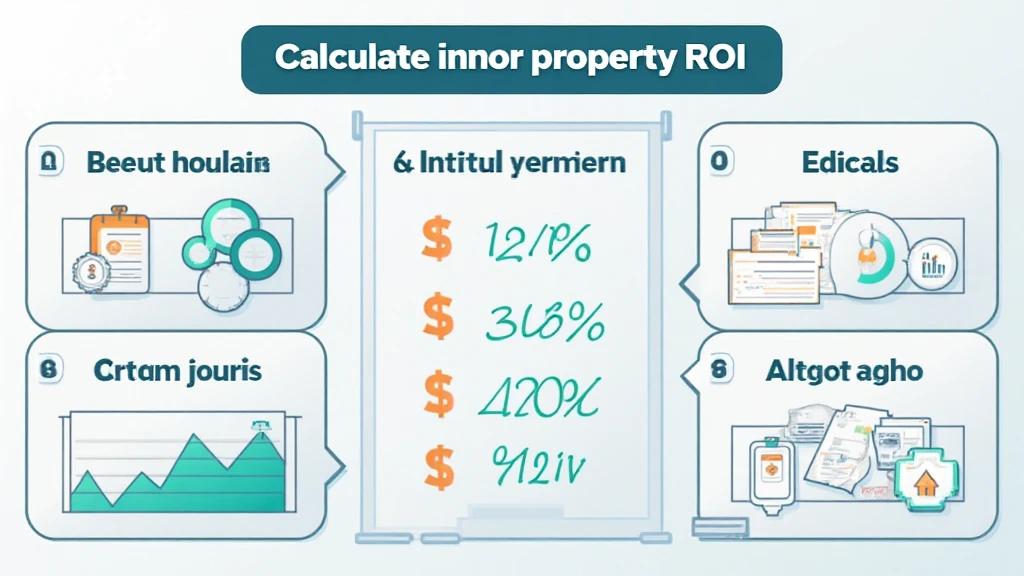Introduction
With the staggering amount of $4.1 billion lost to DeFi hacks in 2024, investors are increasingly turning to strategies that not only protect their assets but also optimize their return on investment (ROI). As the crypto market continues to evolve, understanding how to effectively calculate crypto property ROI has become crucial for both seasoned investors and newcomers alike. In this article, we’ll break down the fundamental concepts of ROI in relation to cryptocurrencies and provide practical methods to enhance your investment strategy.
Understanding ROI in Cryptocurrency Investments
Return on Investment (ROI) in the realm of cryptocurrencies can be quite different from traditional markets. At its core, ROI is a financial metric used to evaluate the profitability of an investment, calculated by dividing net profit by the cost of the investment:
- ROI = (Net Profit / Cost of Investment) x 100
However, crypto investments come with their own set of characteristics that can complicate this metric. Here’s what you need to consider:

- Volatility: The crypto market is notoriously volatile. Prices can fluctuate dramatically in a short period, affecting your overall ROI.
- Transaction Fees: Exchanges often charge transaction fees that can eat into your profits when buying or selling cryptocurrencies.
- Holding Period: ROI can vary significantly based on how long you hold your assets. Long-term holding might yield better returns due to market trends.
Calculating ROI for Different Crypto Assets
The method you use to calculate your ROI can vary depending on the type of crypto asset you are dealing with. Let’s explore how to calculate ROI for various crypto assets:
1. Bitcoin Investments
Bitcoin remains the most widely known cryptocurrency. To calculate Bitcoin ROI, follow these steps:
- Find out your initial investment in Bitcoin.
- Estimate the current value of your Bitcoin holdings.
- Subtract the initial investment from the current value to get your net profit.
- Use the ROI formula provided above.
2. Altcoin Investments
For altcoins, the calculation is similar, but consider the additional market factors specific to that coin:
- Research historical performance and market sentiment.
- Keep a close eye on transaction fees, as they may differ from those of Bitcoin.
3. Staking and Yield Farming
When staking or engaging in yield farming, calculating ROI includes the rewards accrued:
- Calculate the amount of cryptocurrency earned from staking or liquidity provision.
- Factor in the initial investment and any transaction fees.
- Apply the ROI formula to assess the performance.
Real-World Example: Calculating ROI
Let’s look at a hypothetical example to illustrate how ROI is calculated in practice:
Imagine you purchased 1 Bitcoin for $30,000. After holding it for a year, the price rises to $50,000. Here’s how the calculation would look:
- Net Profit = Current Value – Initial Investment = $50,000 – $30,000 = $20,000
- ROI = ($20,000 / $30,000) x 100 = 66.67%
This means that your investment yielded a ROI of 66.67% over the year.
The Role of Market Data in ROI Calculation
To accurately determine ROI in your crypto investments, market data is invaluable. Here are key data points to help you:
- Historical Price Trends: Analyze price movements over time to understand potential growth patterns.
- Market Capitalization: This figure indicates the total market value of a cryptocurrency and can help gauge its stability.
- Adoption Rates: Understanding how many users are adopting a particular cryptocurrency can indicate its future potential.
In Vietnam, for instance, the user growth rate for cryptocurrencies has been reported at 13% YoY in 2025, showcasing a growing interest and market adoption that can impact your ROI.
Strategies to Improve ROI in Cryptocurrency
To enhance your ROI further, consider implementing these strategies:
- Diversification: Don’t put all your eggs in one basket. Invest in a mix of cryptocurrencies to mitigate risk and improve potential returns.
- Regular Monitoring: Track your investments regularly to make informed decisions based on market changes.
- Utilize Advanced Tools: Tools like portfolio trackers can help visualize your investments and returns over time.
Common Mistakes to Avoid When Calculating ROI
While calculating and interpreting your crypto ROI, common pitfalls include:
- Ignoring taxes, which can significantly affect your net profit.
- Neglecting to count transaction fees in your calculations.
- Not accounting for volatility or timing your trades poorly.
Conclusion
Calculating crypto property ROI is not just a necessity but an art that involves understanding market dynamics and personal investment strategies. By considering factors like volatility, transaction costs, and market data, you can gain deeper insights into your investment performance. Remember to stay updated with market trends—especially in regions in emerging markets like Vietnam—and adjust your strategies accordingly. This careful attention to your ROI can be the key to successfully navigating the complex world of cryptocurrency investments.
For more resources on crypto investments and to stay informed, visit allcryptomarketnews.





